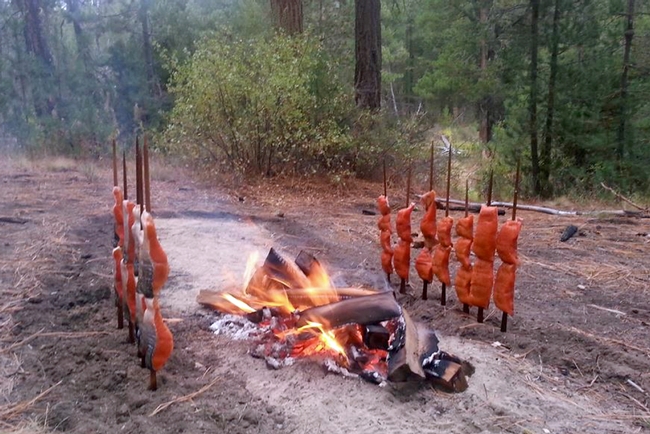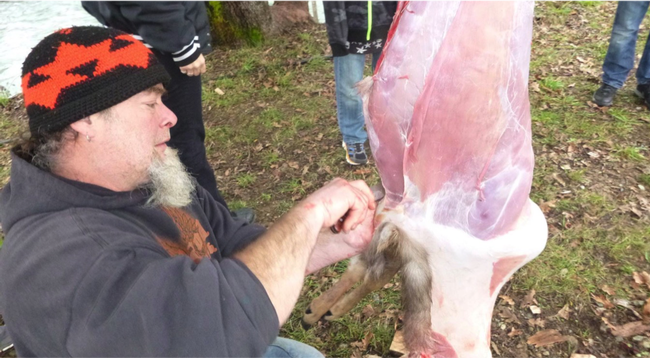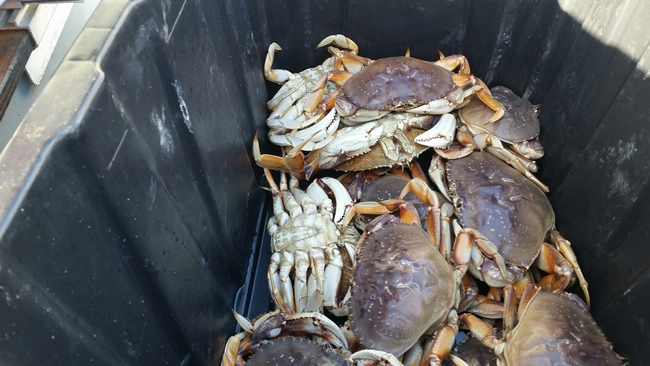With access to native foods, Native American families less likely to face food insecurity
Native Americans suffer from the highest rates of food insecurity, poverty and diet-related disease in the United States. A new study finds that Native American communities could improve their food security with a greater ability to hunt, fish, gather and preserve their own food.
“How food security is framed, and by whom, shapes the interventions or solutions that are proposed,” said Jennifer Sowerwine, UC Cooperative Extension specialist at UC Berkeley, who led the study in partnership with the Karuk, Yurok, Hoopa, and Klamath Tribes. “Our research suggests that current measures of and solutions to food insecurity in the United States need to be more culturally relevant to effectively assess and address chronic food insecurity in Native American communities.”
The study conducted by researchers at UC Berkeley and four Native American tribes shows that 92% of Native American households in the Klamath Basin suffer from food insecurity.
Native American tribes in the Klamath Basin seasonally harvest, consume and store diverse aquatic and terrestrial native foods including salmon, acorns and deer. In survey responses, 86% of the participants said they consumed native foods at least once in the previous year. Yet significant barriers, including restrictive laws and wildlife habitat degradation, limit availability and quality of these foods.
While 64% of Native American households in the Klamath Basin rely on food assistance (compared to the national average of 12%), 84% of the Native Americans using food assistance worried about running out of food or had run out of food. This suggests the need to consider more effective solutions rooted in eco-cultural restoration and food sovereignty to address food insecurity in Native American communities.
Study participants strongly expressed the desire for strengthened tribal governance of Native lands and stewardship of cultural resources to increase access to native foods, as well as strengthening skills for self-reliance including support for home food production. Community members suggested solutions including tribe-led workshops on native foods gathering, preparation and preservation; removing legal barriers to hunt, fish and gather; restoring traditional rights to hunt, fish and gather on tribal ancestral lands; providing culturally relevant education and employment opportunities to tribal members; and increased funding for native foods programs.
While growing evidence suggests that native foods are the most nutritious and culturally appropriate foods for Native American people – and over 99% of people surveyed in the region said they want more of these foods – nearly 70% said they never or rarely get access to the native foods they want.
“We know our efforts to revitalize and care for our food system through traditional land management are critical to the physical and cultural survival of the humans who are part of it,” said Leaf Hillman, program manager for the Karuk Tribe's Píkyav Field Institute. “This study will support our ability to bring that message to the decisionmakers who need to hear it.”
With the study results indicating that increased access to native foods and support for cultural institutions such as traditional knowledge and food sharing are key to solving food insecurity in Native American communities, Sowerwine and the research team propose including access to native foods as a measure for evaluating food security for Native people.
The assessment is based on 711 surveys completed by households from the Karuk, Yurok, Hoopa and Klamath Tribes, 115 interviews with cultural practitioners and food system stakeholders, and 20 focus groups with tribal members or descendants.
In addition to Sowerwine and Hillman, the study was conducted by post-doctoral researchers Megan Mucioki and Dan Sarna-Wojcicki, and research partners from the Yurok, Karuk and Klamath Tribes.
“Partnering with tribal community members in the research makes the research stronger, and that is especially true in this unique food security assessment,” said Sowerwine. “With the study design grounded in nearly a decade of relationship-building and respectful engagement with our tribal partners, we are confident that our results reflect their priority questions and concerns while contributing valuable new information to the field of indigenous food systems.”
“Reframing food security by and for Native American communities: a case study among tribes in the Klamath River basin of Oregon and California” is published in the journal Food Security.
This research was part of a $4 million, five-year Tribal Food Security Project funded by USDA-National Institute of Food and Agriculture-Agriculture and Food Research Initiative Food Security Grant #2012-68004-20018. For full results and recommendations from the project team, visit https://nature.berkeley.edu/karuk-collaborative/?page_id=1088.



